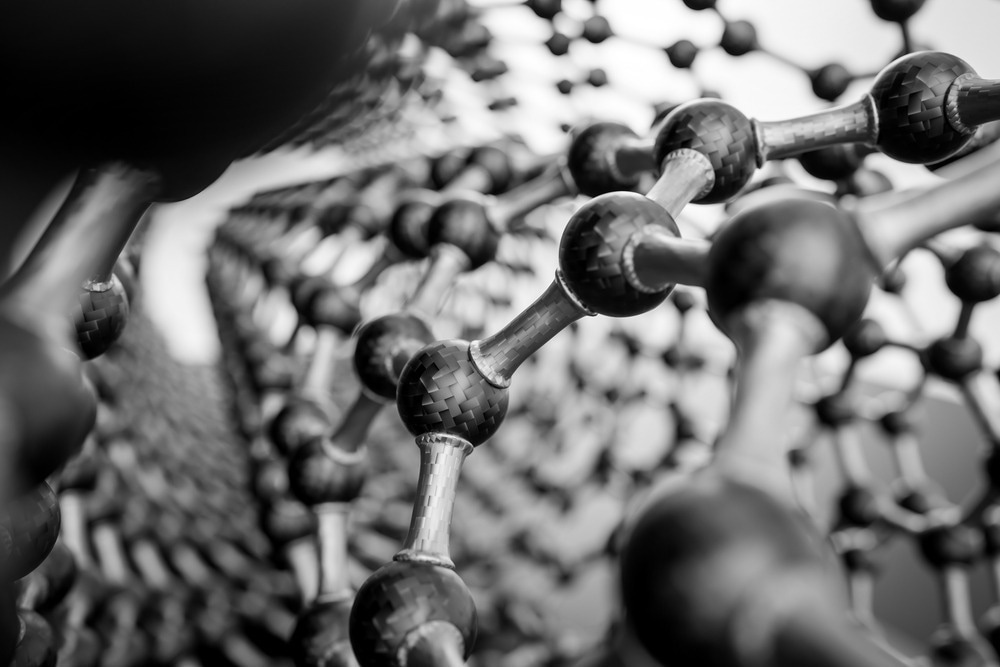In a recent article published in the journal Carbon, researchers from Korea investigated the effects of microstructural evolution on the density of carbon nanotube (CNT) fibers. The density of CNTs is a crucial factor in determining their mechanical properties and potential applications in lightweight and high-strength materials. Understanding the structural changes in CNT fibers is essential for optimizing their performance.

Image Credit: Forance/Shutterstock.com
Background
CNTs are one-dimensional tubular structures known for their exceptional mechanical, electrical, and thermal properties, making them attractive candidates for lightweight and high-strength materials in various applications.
The unique tubular structure of CNTs contributes to their relatively low density compared to traditional materials like metals and other carbon compounds. However, the precise determination of the specific density of CNTs, CNT fibers, or CNT-based nanocomposites remains challenging due to structural complexity and impurities.
Previous research has highlighted the importance of understanding the effects of microstructural evolution on the density of CNT fibers. Residual chlorosulfonic acid (CSA) within CNT fibers has been identified as a critical factor leading to discrepancies between experimental and theoretical density values. CSA molecules can diffuse into the tubular structure of CNTs during the spinning process. They may not be completely removed after coagulation, impacting the fibers' overall density and mechanical properties.
The Current Study
The CNT fibers were prepared using a wet-spinning process with liquid crystal solutions of CNT/CSA. The spinning dope was extruded through a spinneret into a coagulation bath containing a suitable coagulant. The coagulation process facilitated the formation of continuous CNT fibers with controlled diameters and structures.
X-ray scattering measurements were conducted to analyze the void and crystal structure of the CNT fibers. It provided insights into the internal structure and alignment of the CNTs within the fibers. Transmission Electron Microscopy (TEM) imaging was employed to visualize the morphological features of individual CNTs in the fiber.
High-resolution TEM images allowed for the observation of polygonal and elliptical shapes of CNTs, indicating structural transformations during heat treatment. Thermogravimetric Analysis (TGA) was utilized to assess the thermal stability and mass changes of the CNT fibers during heat treatment. The analysis involved heating the fibers to high temperatures to investigate the removal of residual CSA and other functional groups.
The linear density of the CNT fibers was determined by measuring the mass per unit length of the fibers. This parameter provided information on the distribution of CNTs within the fibers and their packing density.
The density of the CNT fibers was calculated by measuring the mass and volume of the fibers. The experimental density values were compared to the theoretical density values of individual CNTs to assess residual CSA's impact on the fibers' overall density. The cross-sectional area of the CNT fibers was determined to evaluate the structural changes in the fibers upon heat treatment.
Changes in the cross-sectional area provided insights into the compactness and packing efficiency of CNTs within the fibers.
Results and Discussion
The investigation revealed significant structural evolution in the CNT fibers during heat treatment, leading to density and mechanical properties changes. Residual CSA within the fibers contributed to higher experimental densities than theoretical values.
The removal of CSA at 1400 °C resulted in a slight reduction in density but still maintained levels above theoretical values. This discrepancy highlighted the complex interplay between structural evolution and density in CNT fibers.
The morphological transformations observed in individual CNTs, from circular to polygonal shapes, played a crucial role in enhancing the tensile strength of the fibers.
The capillary force-induced polygonization of CNTs upon CSA removal increased the contact area between CNTs and reduced the occupied volume within the fibers. This structural change improved mechanical properties and increased density, indicating a correlation between CNT structure and strength.
The comparison between experimental density values of pristine and heat-treated CNT fibers and theoretical density values of individual CNTs provided insights into the impact of structural evolution on density.
The discrepancy between experimental and theoretical values suggested that factors such as residual CSA and morphological transformations influenced the overall density of the fibers. The study emphasized the importance of considering structural changes in CNT fibers for accurate density predictions.
Conclusion
The findings of this study have significant implications for developing high-performance CNT fiber-based materials.
Understanding the relationship between structural evolution, density, and mechanical strength is essential for advancing lightweight and high-strength applications of CNT fibers.
The insights gained from this research can guide future studies on structural control and densification methods to optimize the performance of CNT fibers in various industrial and technological applications.
Source:
So J. H., Junghwan K., et al. (2024). Microstructural evolution effects on the density of carbon nanotube fibers. Carbon, 226, 119180. DOI: 10.1016/j.carbon.2024.119180, https://www.sciencedirect.com/science/article/pii/S0008622324003993